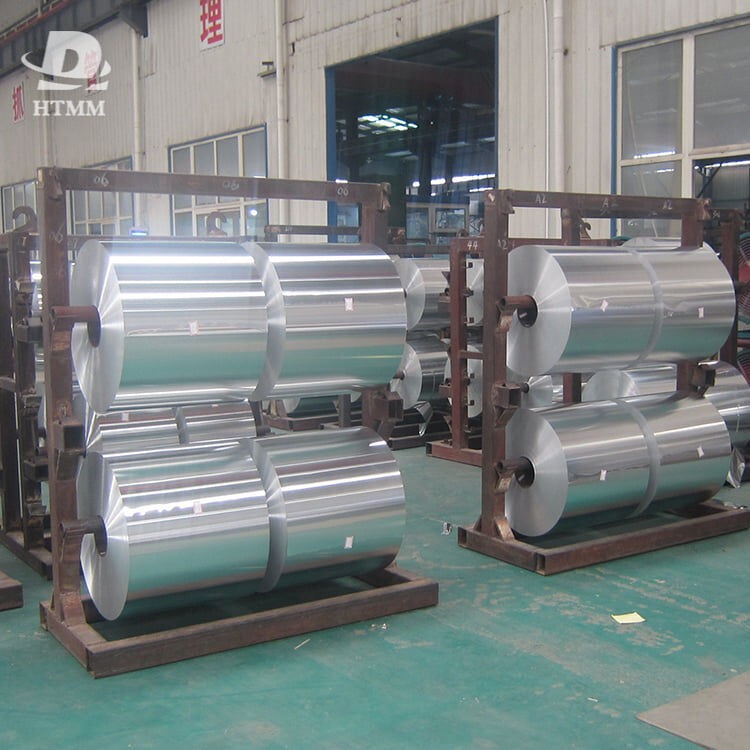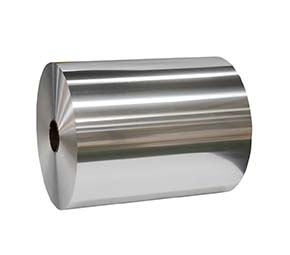For a very long time, aluminum foil has been a reliable material for food packaging. Its adaptability and distinctive qualities make it the go-to material for a variety of food containers, including takeout boxes and baking pans. However, selecting the proper thickness and width of aluminum foil jumbo rolls when making aluminum foil food containers is an important choice that affects everything from food preservation to manufacturing efficiency. In this post, we'll examine the critical elements to take into account before making this important decision.
The hero of food packaging has long been praised as aluminum foil. Due to its special qualities, it is an unavoidable option for maintaining the safety, freshness, and flavor of a variety of food goods. It serves as a flexible barrier, shielding food from harmful external agents like light, oxygen, moisture, and pathogens.
Measurement of Thickness with Accuracy
It is essential to comprehend the units used to measure foil thickness. It is often measured in microns in the metric system, which represents a microscopic thickness of 0.001 millimeters. The gauge unit, which equals 0.01 mils in the United States, is more widely used. This contrast emphasizes how cautiously the appropriate thickness for aluminum foil food containers must be chosen.
 Applications and Options
Applications and OptionsThe aluminum foil's thickness needs to be carefully suited to the intended use. This application-specific approach makes sure the foil accomplishes its goal successfully. For instance, the delicate nature of chocolate bars necessitates the use of ultra-thin foils, frequently less than 12 microns, to produce a fine, smooth appearance while preserving the integrity of the final product.
Gauge or Micron Thickness: Understanding
The creation of food containers depends heavily on the aluminum foil's thickness, however it's important to understand the units of measurement used. Thickness is frequently measured in microns in the metric system, where one micron is equal to 0.001 millimeters. Gauges, which equal 0.01 mils, are more frequently used in the United States. Your individual application should guide your decision on foil thickness:
Application Specifics: The purpose for which your containers are meant is crucial. Thinner foils (around 12–15 microns) are ideal for cold or lightweight items like sandwiches and salads since they are practical and affordable. Conversely, thicker foils (18-30 microns) offer better strength and heat resistance for heavier or hotter items like casseroles or roasted meats.
Heat Conductivity: Take into account the foil's heat conductivity at various thicknesses. In order to maintain constant temperatures while cooking or baking, thicker foils have a slower rate of heat transfer.
Choosing the Correct Width
Your foil rolls' width should match the dimensions and design of the food containers you plan to produce. Rolls with a custom width can be made to fit your particular manufacturing requirements, reducing waste and increasing effectiveness. However, using widely available foil rolls made in these standard sizes can be more cost-effective if your container sizes match common widths (e.g., 250mm, 300mm, 450mm).
Allocation of Temper and Alloy
Choosing the right foil also requires careful consideration of the alloy and temper of the aluminum:
Alloy Characteristics: Each aluminum alloy has special qualities. For instance, the 3003 alloy is frequently used for food containers due to its popularity for both its corrosion resistance and formability. The 8011 alloy, on the other hand, is quite strong and can handle high-temperature applications. Work together with your foil supplier to determine which alloy best meets your needs.
Variations in foil's temper have an impact on its malleability and hardness. Because they are easier to shape and mold, foils with soft or semi-soft tempers (such H14, H18) are frequently chosen for the fabrication of food containers.
Aspects of Surface Finish
Aluminum foil's surface finish has effects on functionality in addition to aesthetics. For instance, containers are easier to handle when embossed surfaces are present, especially in settings where secure handling is essential.
 Presentation Design
Presentation DesignFood containers' aesthetic attractiveness is crucial for branding and client perception. This is where the surface finish is crucial. With alternatives like shiny, matte, or textured surfaces, brands can better present their products overall and match their packaging to their brand.
Food Preservation Barrier Properties
Aluminum foil's barrier qualities are essential for keeping food fresh. The essential barrier qualities are determined by the particular food being packaged. When extending shelf life for perishable goods, increased levels of moisture and oxygen resistance may be necessary to safeguard the contents' quality and safety.
Coating and Lubrication for Effectiveness
Coated or lubricated foils are frequently used to increase production efficiency. These characteristics lessen friction between the foil and the manufacturing machinery, lowering the possibility of tearing or misalignment. As a result, there are less hiccups and smoother operation of the industrial processes.
Keeping Cost and Sustainability in Check
Cost and sustainability factors should be balanced during the decision-making process. While wider or thicker foils could cost more up front, their improved production efficiency and decreased material waste might result in cost savings. Thinner foils are frequently more environmentally beneficial since they use less material and require less transportation, which is in line with the larger industry trend toward sustainability.
Non-Negotiable: Regulatory Compliance
It is imperative that the aluminum foil you select conforms with all applicable laws and standards pertaining to food safety. To maintain the integrity and safety of your food containers and safeguard consumer health, it's essential to adhere to industry standards and certifications like FDA (U.S.) or EU food contact compliance.
Construction of enduring supplier relationships
Building a strong relationship with your foil supplier is advantageous from a strategic standpoint as well as a practical one. A trusted supplier can guarantee timely delivery, give consistent product quality, and offer technical support, all of which help to minimize production delays.
Confidence Testing and Prototyping
Testing and prototyping are essential steps to take prior to making a significant purchase. By following these steps, you may confirm that the selected foil satisfies your precise specifications and functions well in your production operations. The safety, functionality, and quality of your food containers must all be guaranteed during this crucial stage.
In conclusion, choosing the proper aluminum foil thickness and breadth for food container production is a complex procedure that takes into account technical, economic, environmental, and regulatory factors. To negotiate these complexity and make wise decisions, strong cooperation with suppliers and industry experts is necessary. In the end, choosing the proper foil greatly affects the functionality, safety, and marketability of your food containers, ensuring that they perfectly fulfill their job of food preservation and presentation.

.jpg)



